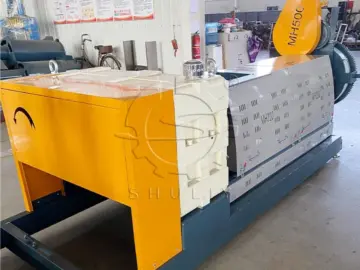The use of plastics has become indispensable in modern agriculture. Whether it is greenhouse covers, drip irrigation pipes, or agricultural films and packaging materials, plastics play an important role in enhancing crop yields and protecting plants. However, as the use of plastics increases, recycling of agricultural plastics has become increasingly important to reduce environmental pollution and resource waste. In this paper, we will discuss the types of agricultural plastics, their materials, recycling methods, and commonly used agricultural plastic recycling machines.
Types of Agricultural Plastics
The main types of agricultural plastics include the following:
- Agricultural films: used to cover greenhouses and mulch to provide the warmth and humidity required for plant and crop growth.
- Plastic drip Irrigation Tubing: used for efficient irrigation and reducing water waste.
- Plastic packaging: such as poly bags and trays for pesticides and fertilizers.
- Plastic netting: used to support plant growth and protect crops.
- Waste plastic utensils: such as plastic seedling trays and plastic flower pots.
Common Agricultural Plastic Materials
- Polyethylene (PE): widely used in agricultural films, drip irrigation pipes, and polyethylene packaging materials, with good weather and corrosion resistance.
- Polypropylene (PP): commonly used in packaging and agricultural netting, with strong heat resistance and tensile strength.
- Polyvinyl Chloride (PVC): mainly used for certain types of pipes and containers.
Commonly Used Machines for Agriculture Plastic Recycling

Crusher for agriculture plastic waste: Used to crush discarded agricultural plastics, reducing their size and preparing them for subsequent processing.
Agriculture plastic washing machine: used to efficiently clean farm plastic scrap, removing field dirt and residues to ensure recycling quality.


Agriculture plastic granulator: Processes crushed plastic into granules for subsequent processing and use.






